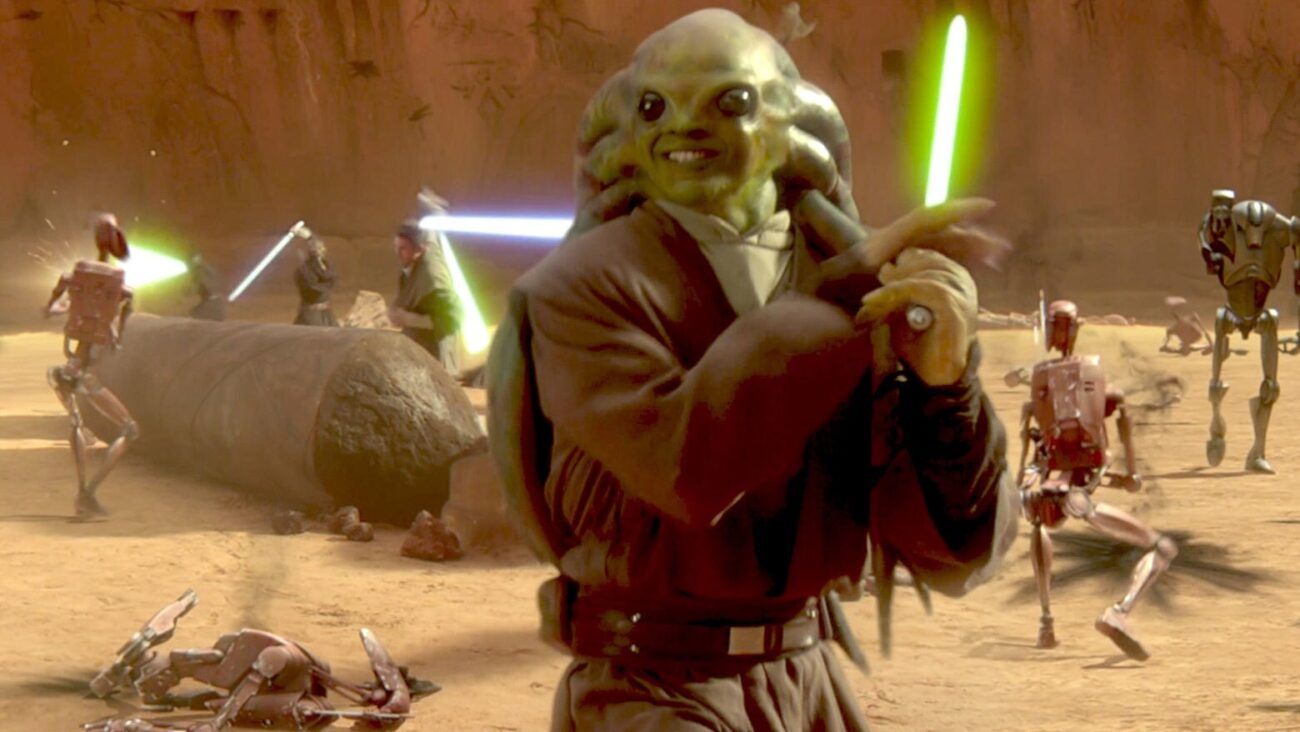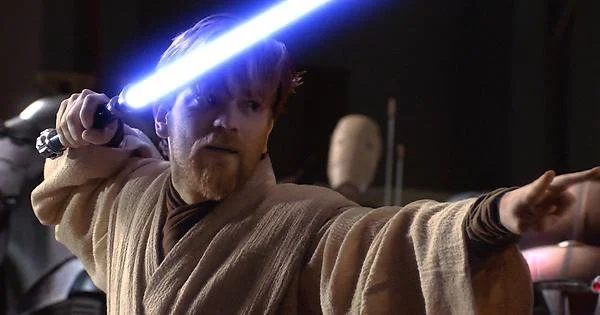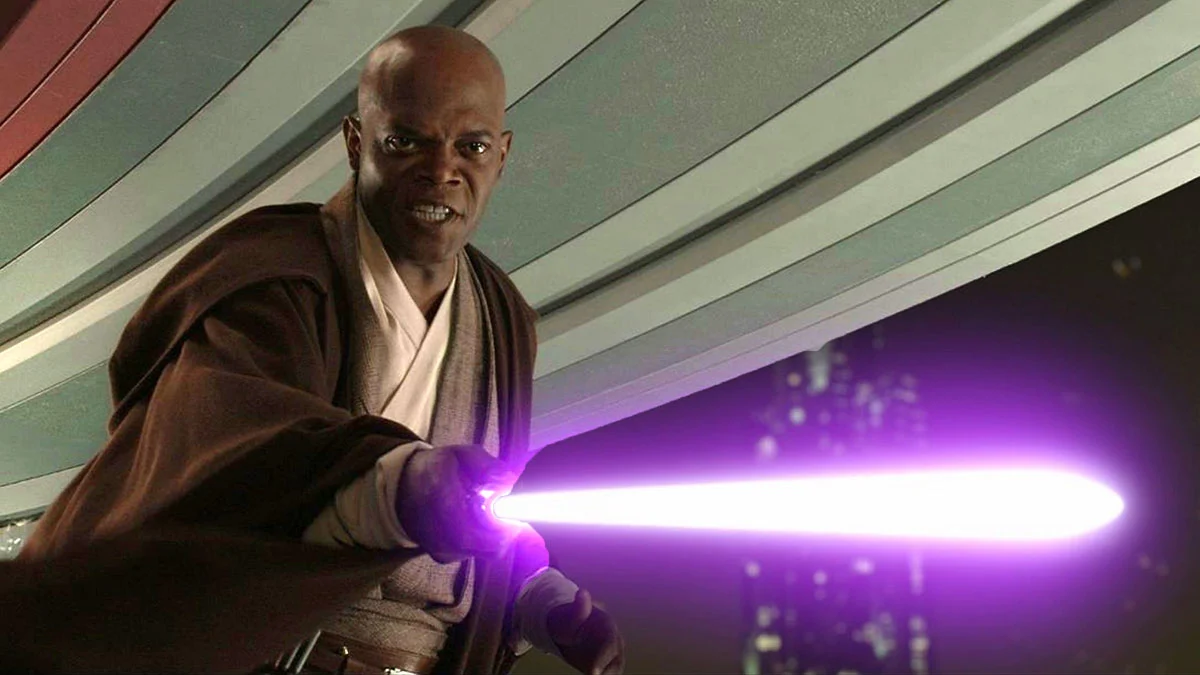All 7 Lightsaber Combat Forms: Which One Is the Best?

There are many things to love about the world of Star Wars, as this is a fictional universe that tells amazing stories full of complex characters. But while that may be true, there has always been something special about the Jedi and the Sith wielding their laser swords around. And that’s because fights involving lightsabers have always been the coolest parts of the entire world of Star Wars.
Of course, the Jedi and Sith that train using the lightsaber don’t just wave these swords around. That’s because they need to learn the proper combat forms of a lightsaber. As such, there are multiple lightsaber combat forms that most Jedi and Sith learn and use, depending on their own preferences. So, with that said, let’s look at all of the different lightsaber combat forms in Star Wars.
Lightsaber combat forms explained
Form I: Shii-Cho
The first lightsaber combat form is Shii-Cho, and it is also the oldest lightsaber form. This is a very simple lightsaber form that focused on basic strikes that formed the fundamentals of lightsaber combat. As such, most Jedi and Sith learn Shii-Cho early to understand the basics of lightsaber combat. And that is why Shii-Cho is often the most popular form that Padawans use in the Jedi Order.

Shii-Cho is so simple that it focuses on maiming and disarming armed opponents. That was why it was favored against those that used blasters, as Jedi were known to fight numerous blaster-equipped enemies. But while Shii-Cho may be basic, it is dangerous in the hands of a skilled Jedi Master. For example, Kit Fisto mastered this form and used it as his preferred combat style despite how basic Form I may be.
Form II: Makashi
Developed when lightsaber duels became much more common, Form II: Makashi is the most elegant out of all of the different lightsaber combat forms. Of course, its purpose was to allow the Jedi to fight against the Sith and other people that used melee weapons in combat. And this style became popular due to how elegant and graceful it is, as it almost made the Jedi look like a ballet dancer.
Makashi is much like fencing because it focuses on facing a single opponent that fought using melee weapons. The goal of Form II was to disarm an opponent using quick and precise strikes that aren’t powerful but are fast enough to break through an opponent’s defense without necessarily killing or maiming them. Count Dooku, one of the greatest duelists of the Jedi Order before falling to the dark side, was the greatest at using this technique.
Through this combat form, he broke through Obi-Wan Kenobi’s defense multiple times on the many different occasions that they fought one another.
Form III: Soresu
Form III: Soresu was developed in response to the growing need for the Jedi to learn how to defend against different types of attacks, regardless of whether they are from blasters or lightsabers. The goal of Soresu is to allow the user to use controlled and tight movements that don’t expend a lot of stamina.
As such, the style puts the user in a defensive stance almost the entire time while conserving stamina so that the duelist can find an opening in the opponent’s defense through proper timing and analysis.

In that regard, this form is the most defensive lightsaber form because the user would only attack whenever there’s an opening in the opponent’s defense or when the opposing duelist gets tired. The greatest Jedi to ever use this form was Obi-Wan Kenobi, whose disciplined and patient nature allowed him to study his opponent’s movements while defending himself the entire time so that he could find the right time to strike.
Form IV: Ataru
In contrast to Form III, Form IV: Ataru is an offense-oriented lightsaber form that is said to be the most aggressive out of all the different forms the Jedi were allowed to use. Ataru focuses on acrobatic and aggressive movements that allow the Jedi to easily and quickly overwhelm an opponent. It also utilizes the Force so that the user can generate more power and mobility while attacking.
Due to the acrobatic nature of this form, Ataru was said to be very demanding on the user’s part. It requires the user to be well-conditioned and agile enough to strike from a lot of different directions using acrobatic movements that Force aids.
The drawback, however, is that it left the user open to many attacks, which was why Obi-Wan abandoned this form as his master, Qui-Gon Jinn, died favoring Form IV. However, Jedi Master Yoda favored Ataru because his small frame made it difficult for opponents to take advantage of its openings.
Form V: Shien/Djem So
Form V is a lightsaber form that has two different variants. Shien was the first variant developed as it was a form that was created to allow the Jedi to defend themselves against blaster bolts and quickly counter by deflecting the bolts or by getting as close as possible. Meanwhile, Djem So was developed in response to opponents that used lightsabers. Djem So focused on blocking and parrying before going out on offense.
While they may have different uses, Shien and Djem So use the same principles of blocking and parrying before switching to an offensive stance. This form aimed to blend defense and offense so that the Jedi could go for quick counterattacks after a successful defensive stand. That is why Form V is very demanding on the user’s part, as it requires the duelist to constantly switch and transition between defensive and offensive stances. Anakin Skywalker and Luke Skywalker favored Form V.
Form VI: Niman
Form VI: Niman is the most popular form that the members of the Jedi Order use because it was developed to give them the best of all of the worlds. That means that it combines many of the different qualities of the other combat forms into a quite balanced approach. Its usage isn’t very demanding, but it also has no notable strengths or weaknesses.
In many ways, Niman is a lightsaber form that ticks all boxes in offense, defense, and stamina consumption but doesn’t really stand out in its strengths. But the fact that it is balanced makes it popular among different Jedi Knights and Masters. It also integrates Force powers more than the other lightsaber forms.
Form VII: Juyo/Vaapad
The most aggressive lightsaber form is Form VIII. Juyo was the first variant of Form VII developed. This style relied on the user’s aggression and emotions, which was prohibited in the Jedi Order. The Jedi feared that the aggressive and emotional nature of Juyo could lead them to the dark side, which was why only a few people were allowed to use it.
Juyo is the Sith’s favored style because of its aggression. The style relies on relentless assaults that allow the user to stay on the offensive while drawing power from emotions. Its goal is to overwhelm the opponent using aggressive strikes fueled by rage and anger. Another reason why Juyo was prohibited was the fact that it was reckless and that it left the Jedi open to attacks.

Mace Windu once used Juyo and noticed that he was immune to its tendency to form inner darkness within the user. That was when Windu was allowed to use the form, and he mastered Juyo to form his own Form VII variant, Vaapad. The goal of Vaapad is to use anger and passion without giving into the person’s inner darkness. Vaapad relied on rapid and powerful strikes that were controlled and disciplined.
Which lightsaber combat form is the best?
Now that you know all of the different lightsaber combat forms, it is easy to see that they have their own strengths and weaknesses. That is why no lightsaber form stands out as the best. In most cases, it depends on the situation and the person using the certain form.
For example, Form I uses basic attacks that aren’t powerful or acrobatic but simple enough for anyone. In the hands of a seasoned master, the basic attacks incorporated in Form I can be devastating. Likewise, Form VII may be the most aggressive out of all the forms, but it isn’t necessarily the strongest because careless duelists will leave themselves open to attacks.
Some say that the best combat form is Form V, which is the very same form that the Skywalkers favor. While it may be true that Form V is strong because it allows the user to defend and mount counterattacks effectively, it is very demanding on the user’s part.
Likewise, Form III is said to be the best in terms of its defensive capabilities, but it can be quite useless if the Jedi wants to end a fight quickly. It can also be weak against a form that uses precise and quick strikes that don’t expend a lot of stamina. That is why Dooku could easily break through Obi-Wan’s Form III using his Form II.
Meanwhile, in most cases, Form IV is dangerous because it leaves plenty of openings for the Jedi’s defense. However, in the hands of a smaller person like Yoda, the openings that Form IV tends to leave are difficult to exploit.
Of course, Form VI incorporates many of the qualities that make the first five forms special in their own right. But the problem with Form VI is that it has no noticeable strengths and isn’t the best in any situation.
So, with that said, the different lightsaber forms have their own advantages and disadvantages. Some duelists prefer certain forms that favor their physical abilities and strengths. And that is why the strength of a lightsaber form can depend on a case-to-case basis.
What do you think is the best combat form? Let us know in the comments!

